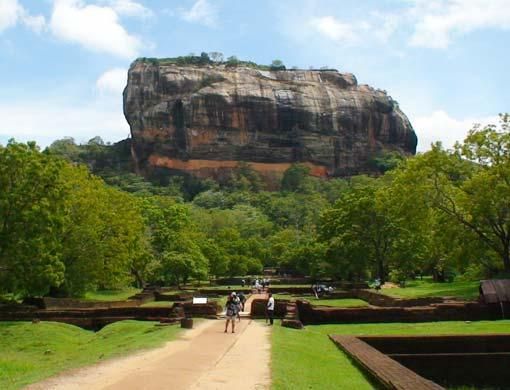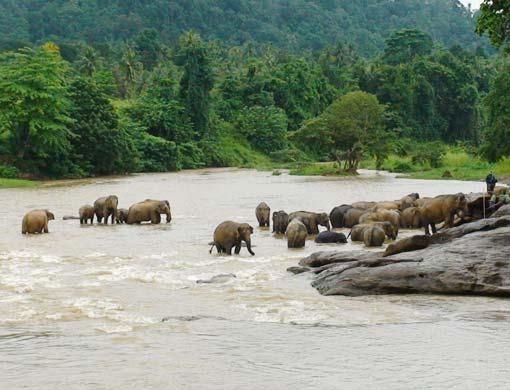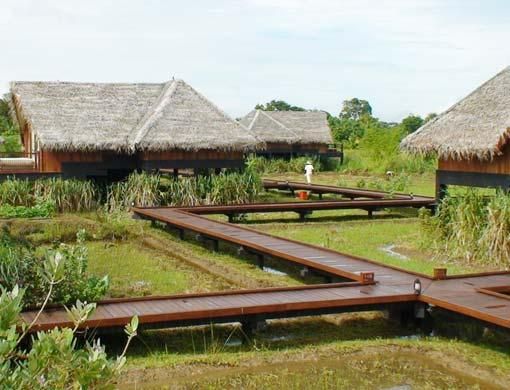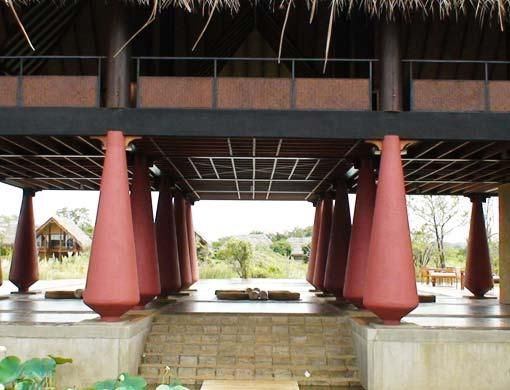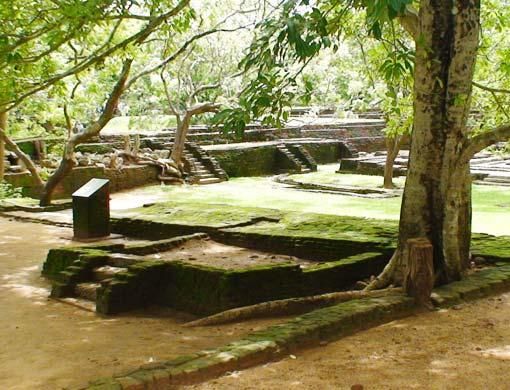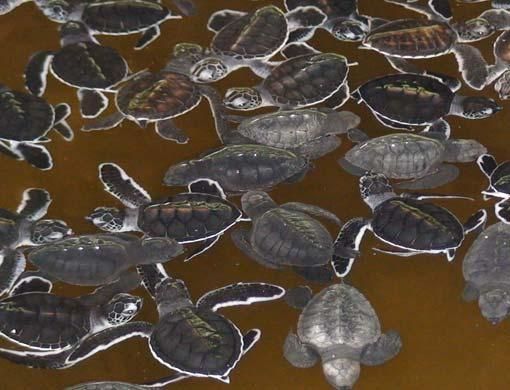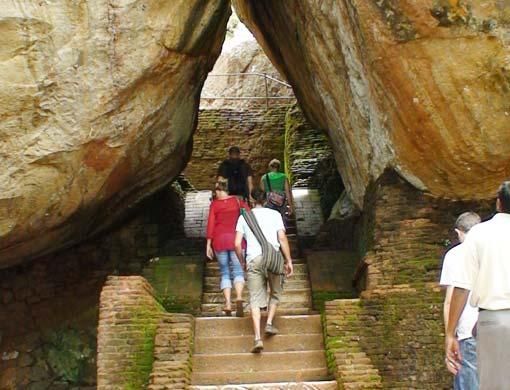Sri Lanka is a land which in the words of its tourism minister has something for everyone. There are beaches, areas of historical interest, wildlife, architectural marvels, very hospitable people ... Shiva Kumar Thekkepat was reluctant to return after a five-day tour.
The defining moment of my trip to Sri Lanka occurred the moment we landed in Colombo and approached the immigration counter: the officer checked our passports, stamped them and returned them to us. No entry charges, no fuss! The visa on arrival was valid for a month.
How much do we pay, one of us asked. "Ayubowan!'' wished the officer, smiling broadly as he waved us through. It was a traditional Sri Lankan greeting (meaning 'May you live long') that we would frequently hear over the next five days of our stay in this picturesque island.
Welcome to Sri Lanka, the nation of no fuss.
The balmy day was already turning cloudy when we stepped into the van that was to take us on our five-day trip across the island. Enroute, the magic happened:
It rained.
"Ayubowan!'' That was Ranil Samarasekera, our ever-smiling, all-knowing tour guide. He enjoyed educating us about his country, and never hesitated to regale us with tales and facts and figures about Sri Lanka over the next few days.
Beginning with the greeting, he meticulously related every detail to us, unruffled even by repeated queries by the group, as we were a multicultural lot.
It did not take long for us to realise that patience and politeness are national virtues ... as are the verdant, uncrowded surroundings.
Stepping into Sri Lanka is like stepping back in time. The pace of life seems to be gentle, even leisurely. There seems to be so much space that it hardly befits the term 'island'.
There is no hustle and bustle, hardly any jostling and pushing, few crowds ... But if there is one thing that is everywhere, it is greenery and we were not even out of Colombo city!
Through the pelting rain, the van cruised towards Sigirya, some 160 kilometres away. The route was picturesque.
Through the regularly misting up windows of the van we
could catch sight of huge trees that lined the road on either side, creating a canopy over much of the long
winding route.
We saw a picture-perfect Sri Lankan wedding taking place by the wayside. The groom was attired like a king of yore; groups of people dressed in pristine white on their way to a Buddhist shrine; fresh and colourful fruits and vegetables laid out neatly on the roadside and a few people were quietly going about their business buying and selling the produce.
There was no haggling, no crowds milling around, no dirt, no noise ... and remarkably a lot less pollution than one would expect in a capital city of a developing country.
The night's halt at the tiny village of Vil Uyana topped it all. A boutique hotel spread out on 24 acres of artificially created marsh fields that doubles as a nature reserve, Jetwing Vil Uyana is a nature lover's dream come true.
Thatched-roof wooden cottages dot the vast reserve around the main structure which is surrounded by lily and lotus ponds.
Here, eco-friendly is a term that is practiced with passion. There are no tarred roads. Neither are there petrol-guzzling cars or buses. Instead, distance commuting is done in
battery-powered buggies.
The paths are buzzing with wildlife: huge monitor lizards, bats, birds, even snakes, though we didn't see any (and neither was I keen to see one).
The hotel lists many species of wildlife that can be spotted in the area and encourages guests to list their sightings on a black board that is displayed prominently in the lobby.
Even though we trooped into the hotel at an odd hour, the Sri Lankan hospitality was intact.
The portly genial young manager Tissa Wickramasuriya was at hand with his courteous staff all in traditional Sri Lankan attire to welcome us. We were each presented with a lotus, a hot towel and an even warmer 'Ayubowan'.
The dinner that followed was as good as it was eclectic: a mixture of Japanese and Sri Lankan cuisine.
A lull in the rain in the morning was an invitation to take a walk around the hotel. The previous night's rain had left the flora squeaky clean and the smell of the fresh earth was heavenly.
A dip in the private plunge pool outside the cottage brought back memories of similar dips in the pond attached to our ancestral home in Kerala, India (though here there was no fear of snakes sharing your pool!).
The attractive cottages around the main structure stand on stilts in a marshland and the only way to reach your cottage door is by walking across artistically arranged boardwalks.
Seeing the little structures and actually staying in one gave the term magical a new meaning.
After a hearty breakfast, we set off to Sigiriya, an ancient rock-top fortress. The soaring, flat-topped mesa upon which Prince Kashyapa built this acclaimed fifth-century compound has been called a Wonder of the World for its amazing engineering.
However, evidence - the royal swimming pool, wide thrones, and saucy cave frescoes - suggests he used it more as a pleasure palace than military post.
The air was thick with humidity and it did not take long for us to break out into a sweat climbing up Sigiriya. As we were traversing the sheer side of Kashyapa's palace on narrow - and at some points rickety iron rails - our guide warned us to look out for hornet swarms.
But the humidity and threat of hornets were all worth it: The view from the top was just spectacular. The mountain cast its shadow on the jungle canopy below creating a mosaic of sorts on the plains. From this height, the greenery of the country was even more stark.
We took a deep breath and began scaling the remains of a huge, carved lion for the final ascent.
Summiting it and breathing in the balmy air was exhilarating. Looking down we could see that only the square foundation of the fortress remained.
A few small trees provided scant shade in the midday sun, and a handful of tourists and a few members from out group decided to crouch near the lion's giant paw which provided a little shelter from the sun.
Our guide informed us that this structure is one of six Unesco World Heritage sites in Sri Lanka.
There was some excitement on our way down as well: A snake charmer with a few snakes had positioned himself along the route eager to show off his pets to tourists.
Chris from our group garlanded himself with massive python. It was too good a chance to pass up so I followed suit. Ah, men will always be boys! I handed over my camera to the snake charmer and asked him to click a few pictures.
He did but I later found that all of them were fuzzy ... but I had no plans to go up once again and repeat the python act.
Spicy tales
As we got to see more of Sri Lanka, we realised why tourism is the top earner for this country. Every industry has a tourism angle to it. The spice gardens on the way to Kandy from Sigiriya are a case in point.
All of them have a restaurant attached to their estate, knowledgeable guides who speak English, salespersons who market the spices ... there are even little kiosks selling ayurvedic medicines for various aches and pains and ailments.
A few of them even had areas where ayurvedic massages were offered. We visited the Ranwali Spice Garden, where we taken on a grand tour of the place. Cardamom, nutmeg, pepper, cinnamon and a variety of ayurvedic medicinal herbs are cultivated here.
To prove to us the efficacy of the herbs we were given a herbal oil massage to relieve stress. How did I feel? Well, in such a picturesque country, it is hard to be stressed out anyway.
Back in our van, we trundled on to Kandy and once again, the rain came pelting down. Blessed with such heavy showers, it is no wonder that everything around the countryside is green and wears a fresh clean look.
Kandy is different from the rest of Sri Lanka in many ways. For one, the people's attire.
Kandy is also home to the legendary shrine that houses the sacred tooth relic of Buddha. The relic is taken out in a procession every year to invoke blessings in the form of rain.
A river runs through it
We stayed at Mahaweli Reach Hotel, named after the river Mahaweli that flows through Kandy and perhaps because of the rains, the river was in spate.
Mahaweli is just one of the major rivers in Sri Lanka, informed our tour guide. This tiny island of 65,525 square kilometres boasts 132 rivers.
No wonder, I said to myself, the land appears so fertile.
Early the next morning we were taken to the Victoria Golf and Country Resort, an absolutely picturesque piece of green.
This course is among the top 100 golf courses in the world, offered a manager of the resort. It was easy to see why. A sparkling lake and a stretch of mountains in the background set this 500-acre golf course apart.
Nestling on the fringes of the green were beautiful chalets and apartments most of which have been snapped up by the who's who of Sri Lankan society, including the country's top cricketers. The resort itself is a fine example of how old-world luxury can be combined with new-age comforts to create a magnet for golf lovers.
What I also found interesting is that the local population effortlessly coexists with their richer brethren: You can see herds of cows grazing on some parts of the course, farmers setting off for their fields, cottages of the cowherds dotting the horizon ...
A visit to a wood-carving factory proved yet again the resourcefulness of the Sri Lankans to add a tourism focus to almost everything.
A young man who looked like he'd be more at home with a rock band explained the different kinds of woods and processes used for making everything from statues to handicrafts to exquisite furniture.
Buddhikka was not only very well-informed, he had an easy engaging manner ... and many of us left the factory clutching pieces of his factory's works.
Lanka is also famous for its precious stones; sapphires, rubies, diamonds, you name it. The centre of mining is Ratnapura. Since it was not on our itinerary, Ranil felt compelled to take us to Zam Gems, one of the major gem manufacturers and jewellers in the country.
The pieces of jewllery which were on display were truly breathtaking; so much so that even the men went into raptures!
Next stop: Pinnawela Elephant Orphanage. This jumbo centre was first established in 1975 to protect motherless calves. It started off with seven orphans, but now is home to 73 male and female elephants.
At least two elephants are born here every year and the elephants, which were first brought here in 1975, are now enjoying life with their 'grandchildren'. The orphanage is not only a tourist attraction but also a conservation and education centre.
A huge old tusker named Raja is blind from a gunshot wound. Another, a female named Sama, limps due to an injured leg ... Most orphans have some such injury but their majesty is not diminished as they stand flapping their ears and chomping on palm leaves.
The calves attract a lot of attention from tourists - a major source of funds to help run the orphanage.
We reached Pinnawela in time for lunch at the restaurant on the riverside from where you can see elephants bathing in the rushing river.
After a late lunch, we left behind the hills and elephants and headed towards the beach.
Bentota here we come
Bentota on the east coast was our next destination. It was night when we reached the Taj Exotica, an apt name we agreed. It stands almost on the beach, a large sprawling property that encourages you to laze around all day.
You wake up to the roar of the waves, walk along the deserted beach, take in an early morning swim and walk back to a garangatuan breakfast at the hotel ...
A visit to the nearby turtle Reclamation Centre is a must. Sarath, the man at the Centre, tells us how they collect the eggs that the turtles lay on the beach at night and hatch them in the improvised hatchery in the centre to protect them from marauders, both human and animal.
The centre is privately owned and sustains itself on the sale of tickets and souvenirs. Sarath shows us the tortoises they rear in the many water tanks on the property.
From just-hatched tortoises that fit into the palm of your hand to a massive six-year-old green turtle (it will be released into the sea when it's seven), there are several breeds of varying ages. The star is an albino turtle named Michael Jackson. Why the name? "Because he is white!'' replies Sarath.
"And if you tickle him, he dances like Michael Jackson too!'' He proceeds to tickle the belly of the tortoise which obediently starts twisting about in a fair imitation of the 'moon walk'!
A small signboard on the broken tanks proclaim the effects of the tsunami that lashed the Lankan coast in 2005. Sarath tells us tales of how the owner of the tortoise sanctuary ran for cover with two of his most beloved turtles under his arms.
"All this has been rebuilt,'' he says. The damages suffered can be still be seen in the crumbling walls of some buildings nearby.
We returned to our van for the last leg of our trip - a return to Colombo.
To hear Ranil describe his country, it would take at least a couple of weeks to enjoy it all and if it were not for deadlines that I had to meet back at work, I would have truly loved to spend a lot more time in this lovely green island nation.
In Colombo, we met Deputy Minister of Tourism Faizer Mustapha at a Sri Lankan Tourism Board do. His choice of words for his country: "Sri Lanka is a lot of things for a lot of people. It depends on what you are looking for.''
He could not have put it better.
As we bid goodbye at the airport, Ranil shook our hands and wished us 'Ayubowan.'


